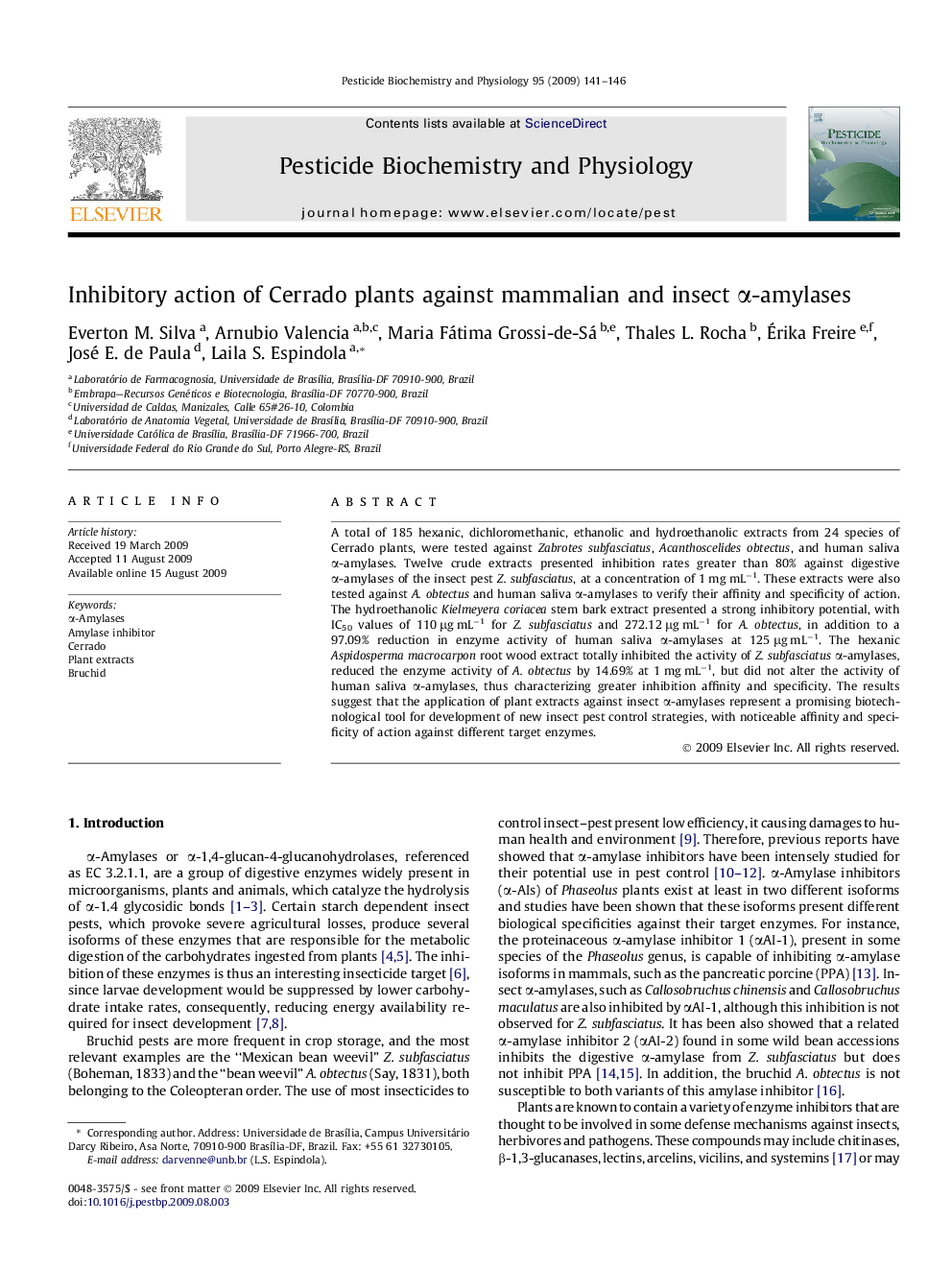| Article ID | Journal | Published Year | Pages | File Type |
|---|---|---|---|---|
| 2009527 | Pesticide Biochemistry and Physiology | 2009 | 6 Pages |
A total of 185 hexanic, dichloromethanic, ethanolic and hydroethanolic extracts from 24 species of Cerrado plants, were tested against Zabrotes subfasciatus, Acanthoscelides obtectus, and human saliva α-amylases. Twelve crude extracts presented inhibition rates greater than 80% against digestive α-amylases of the insect pest Z. subfasciatus, at a concentration of 1 mg mL−1. These extracts were also tested against A. obtectus and human saliva α-amylases to verify their affinity and specificity of action. The hydroethanolic Kielmeyera coriacea stem bark extract presented a strong inhibitory potential, with IC50 values of 110 μg mL−1 for Z. subfasciatus and 272.12 μg mL−1 for A. obtectus, in addition to a 97.09% reduction in enzyme activity of human saliva α-amylases at 125 μg mL−1. The hexanic Aspidosperma macrocarpon root wood extract totally inhibited the activity of Z. subfasciatus α-amylases, reduced the enzyme activity of A. obtectus by 14.69% at 1 mg mL−1, but did not alter the activity of human saliva α-amylases, thus characterizing greater inhibition affinity and specificity. The results suggest that the application of plant extracts against insect α-amylases represent a promising biotechnological tool for development of new insect pest control strategies, with noticeable affinity and specificity of action against different target enzymes.
